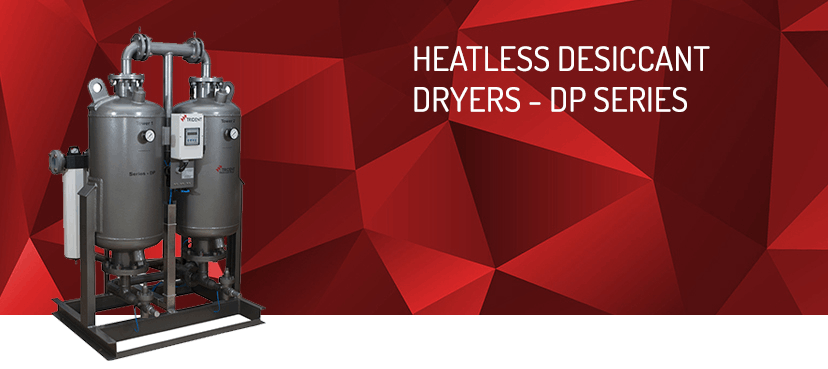Introduction
Air dryers are indispensable components in compressed air systems, ensuring the air delivered is free from moisture and contaminants. Desiccant air dryers, particularly regenerative heatless desiccant dryers, have gained popularity for their efficiency and reliability. However, selecting the appropriate desiccant for your air dryer is crucial to optimizing its performance and longevity. In this blog, we will delve into the world of desiccant air dryer manufacturers, exploring key insights to help you make an informed choice for your compressed air system.
Understanding Desiccants and Their Role in Air Drying
Desiccants are moisture-absorbing materials utilized in air dryers to remove water vapour from compressed air. The desiccant’s primary function is to capture moisture molecules and prevent them from re-entering the compressed air stream. Various desiccant materials are available, each with unique characteristics and performance capabilities, making it essential to choose the most suitable one for your specific application.
Types of Desiccant Materials
Desiccant air dryer manufacturers offer different types of desiccant materials, and the choice depends on the dew point requirements and the level of moisture removal needed. Commonly used desiccant materials include:
Silica Gel: Silica gel is popular due to its excellent moisture adsorption capacity and cost-effectiveness. It is ideal for applications with moderate dew point requirements.
Activated Alumina: Known for its high surface area, it exhibits superior moisture adsorption and is suitable for applications requiring lower dew points.
Molecular Sieve: Molecular sieve desiccants offer exceptional adsorption capacities, making them ideal for achieving ultra-low dew points in critical applications.
Dew Point Requirements
Before choosing a desiccant, it is essential to determine the specific dew point requirements of your compressed air system. The temperature at which moisture in the air starts to condense is known as the dew point. Understanding your desired dew point enables you to select the desiccant material that can effectively achieve and maintain the required dryness level.
Flow Rate and Pressure Drop
Desiccant selection should consider your compressed air system’s flow rate and pressure drop. Different desiccant materials have distinct flow characteristics, and choosing a desiccant that matches your system’s flow rate ensures optimal efficiency. Additionally, manufacturers can provide information about pressure drop levels associated with specific desiccant materials, allowing you to evaluate their impact on your system’s overall energy consumption.
Regenerative Heatless Desiccant Dryers
Regenerative heatless desiccant dryers are widely used in various industries due to their efficiency and reliability. These dryers utilize two desiccant-filled towers to absorb moisture alternately. In contrast, one tower dries the compressed air, and the other regenerates the desiccant by purging it with a portion of dry air. The ability to cycle the desiccant ensures continuous drying without interruption.
Energy Efficiency
Optimizing energy consumption is critical for any compressed air system. When selecting a desiccant, consider its energy efficiency and how it aligns with your system’s overall energy-saving goals. A well-chosen desiccant can significantly contribute to lowering operating costs and enhancing the sustainability of your compressed air system.
Durability and Maintenance
The desiccant material’s longevity directly impacts your air dryer’s maintenance requirements. Some desiccants have longer lifespans and require less frequent replacement, reducing downtime and maintenance costs. Manufacturers can provide valuable insights into the expected lifespan of different desiccant materials, aiding you in planning maintenance schedules effectively.
Conclusion
Desiccant selection is a crucial aspect of optimizing the performance and efficiency of your air dryer in a compressed air system. Desiccant air dryer manufacturers offer a range of options, each tailored to specific dew point requirements and moisture removal needs. Silica gel, activated alumina, and molecular sieve are among the common desiccant materials available, each with unique characteristics for diverse applications.
At Trident Pneumatics, we pride ourselves on being reputable desiccant air dryer manufacturers, offering top-of-the-line regenerative heatless desiccant dryers. With a focus on energy efficiency, durability, and performance, our dryers are designed to deliver reliable moisture removal while minimizing operating costs. Trust in our expertise to help you choose the right desiccant for your air dryer, ensuring a seamless and efficient operation in your compressed air system.




























